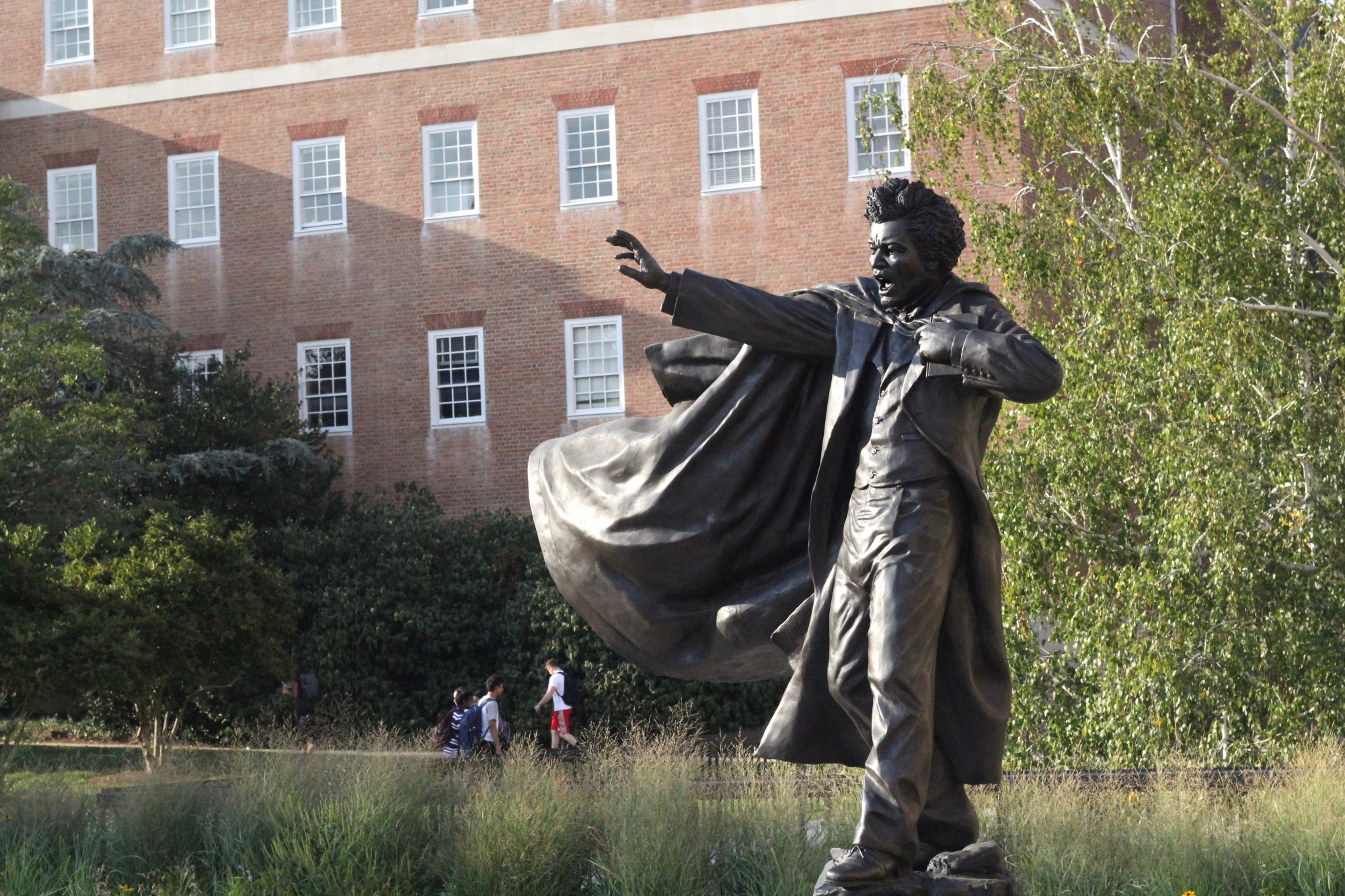The University of Maryland’s SGA is in talks with university officials about creating a black history tour at this university.
The Student Government Association’s diversity and inclusion committee is speaking with Kim Nickerson, the behavioral and social sciences college’s assistant dean for diversity and diversity officer, about creating a virtual or walking tour in time for February — Black History Month.
The SGA is looking to include lesser-known facts about black history on the campus, including that this university’s Black Student Union established the Shuttle-UM bus system on the campus in the 1970s, said Ja’Nya Banks, the SGA’s diversity and inclusion director.
The tour would help raise awareness of the cultural struggles of black people at this university, said Christine Hagan, SGA’s academic affairs vice president.
“We’re walking through places and walking through buildings and not even knowing some of the things that have happened on this campus,” Hagan said.
[Read more: UMD SGA will work with chief diversity officer after initial concerns about transparency]
Similarly, Nickerson said he wants to create a tour about black history on the campus that includes black history facts that “draw heavily on the geographical landmarks on this campus.”
Nickerson’s tour idea came after he and Roger Worthington, this university’s chief diversity officer, discussed how to make scarcely known black history on the campus more widely accessible, Nickerson said.
Campus sites like the Rossborough Inn — this university’s oldest building — should be included in the tour, Nickerson said.
“If the economics of this area worked like the economics every place else, there were slaves working that inn,” Nickerson said.
The tour could also include the Frederick Douglass statue outside Hornbake Library and the Nyumburu Cultural Center, said Rachel Akins, this university’s black student involvement and community advocacy graduate student coordinator.
While the SGA committee envisions a virtual self-guided tour, and Nickerson said his idea would probably translate into a walking tour, SGA President AJ Pruitt said both ideas could complement each other.
“If you’re lucky enough to be on campus and have that time, then a walking tour is great,” Pruitt said. “Given the technology we have right now to have that virtual opportunity to give it to people who don’t necessarily have the time, it’s more accessible being virtual.”
[Read more: After the killing of Richard Collins, UMD SGA begins planning diversity monument]
The SGA committee decided to pursue the idea of a tour in the wake of a number of hate bias incidents affecting the campus community, Banks said.
“After everything that’s been happening on campus, there are a lot of sentiments that the contributions of African-Americans on campus are undervalued,” Banks said.
University Police are investigating three hate bias incidents, including offensive images and language drawn on the wall in a men’s restroom, that occurred between Sept. 28 and Oct. 9 at the North Campus Dining Hall. In August, police announced a person of interest in their investigation of a noose found in a fraternity house in April.
Earlier this month, a black university lecturer received racist voicemails, which he shared on Facebook Live, after he made an appearance on Fox News.
In May, black Bowie State University student 2nd Lt. Richard Collins was fatally stabbed at the Montgomery Hall bus stop on this university’s campus. Sean Urbanski, a white former student of this university, was charged with murder in July. Last week, a Prince George’s County grand jury indicted Urbanski on a hate crime charge.
The biggest lesson that students should take away from the tour is that everyone at this university belongs here, Nickerson said.
“You talk to African-American students and even other students with other identities on this campus and they often feel marginalized,” Nickerson said. “They feel on the edges and they worry that this place doesn’t belong to them, or others make them feel that the place doesn’t belong to them.”
While a black history tour would help students have a better understanding of the university’s history, Hagan said the people who may learn the most from diversity-related events do not typically show up.
Akins said it is difficult to cast a widespread impact from diversity programming because students who feel like an event doesn’t apply to them might not necessarily want to engage.
“Word of mouth is very powerful,” Akins said. “Of course, students spread the word, but again it’s only those who are interested and who are close to the issues who are going to be willing to come out and participate.”



